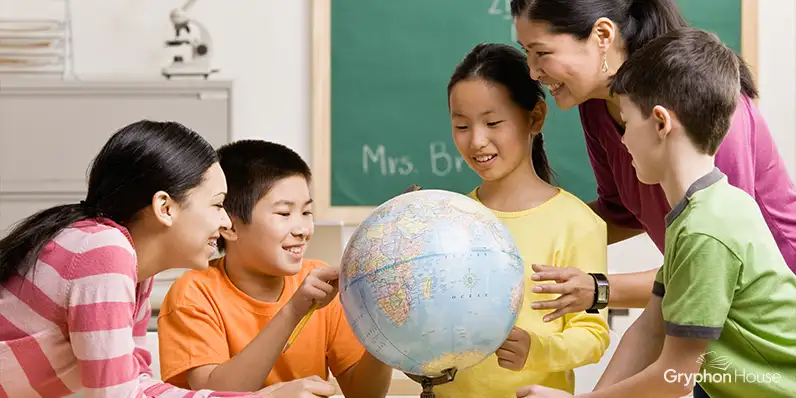Classrooms don’t stand alone; they are part of a much larger community. Every school is made of different children and teachers who bring with them pieces of their families, communities, and background. Together, these different pieces make up the bright, vibrant community that is your classroom!
With young children especially, holding on to these other communities is very important when in school. For many children, preschool is the first time they are ever away from their home. So how can teachers keep students comfortable and enrich the classroom community? Rethinking the Classroom Landscape has the answer! In this book, Sandra Duncan provides tips and tricks for weaving the different “threads” of a child’s community together—the child thread, the family thread, and the community thread. Below are a few simple ideas that will bring your children’s communities into the classroom.
Welcome Stones: Welcome stones are a simple way for children to transition from the home space to the class space while also encouraging them to proclaim their identity. Each child has a unique stone sitting in the classroom. As a parent and child enter the classroom, they find the child’s name on one of the stones and place it in the basket. This symbolizes the transfer from the family to the classroom. The child feels secure and included knowing that he is part of the larger group of children who have also placed their stones in the basket.
Family Puzzles: It is important for young children to know that even when they are at school, their families are never far away. One way to depict this is to make contributions from families a permanent part of the classroom. To honor the uniqueness of children and families, you can offer blank card stock puzzle pieces to adults and children who can then draw on them with markers to showcase their personalities. Each piece displays the adult’s or child’s creativity using vibrant colors, playful characters, and abstract drawings. The individual pieces can be put back together to form a unified picture and displayed in the classroom, highlighting a sense of community among all the families and children in the center.
Local Treasures: Every town and city has its own objects that make it unique. Children who collect artifacts and other local treasures become familiar with the local community’s natural world. Displaying local flora and giving opportunities to manipulate and experience these beautiful objects help children recognize, for example, the names of plants growing in their neighborhood. When they bring these items into the classroom environment to share, they may discover that other children found something similar. With this recognition, children feel accepted and connected to their community.
Author(s)Sandra Duncan
Ashleigh Craven
Ashleigh Craven has a decade and a half of diverse category experience from agency communications to athletic apparel to automotive to education, developing and executing communication strategies in both traditional and social media. She has supported national product launches and corporate events for the likes of Soffe, Buick, Chevrolet, Wake Forest University , Kaplan, and others. She has an BA from the University of Michigan in English and Communication Studies and an MA from Wake Forest University, where she focused her studies on argumentation and presidential rhetoric and speechwriting. She served as director of marketing for Gryphon House from 2017- 2020.

